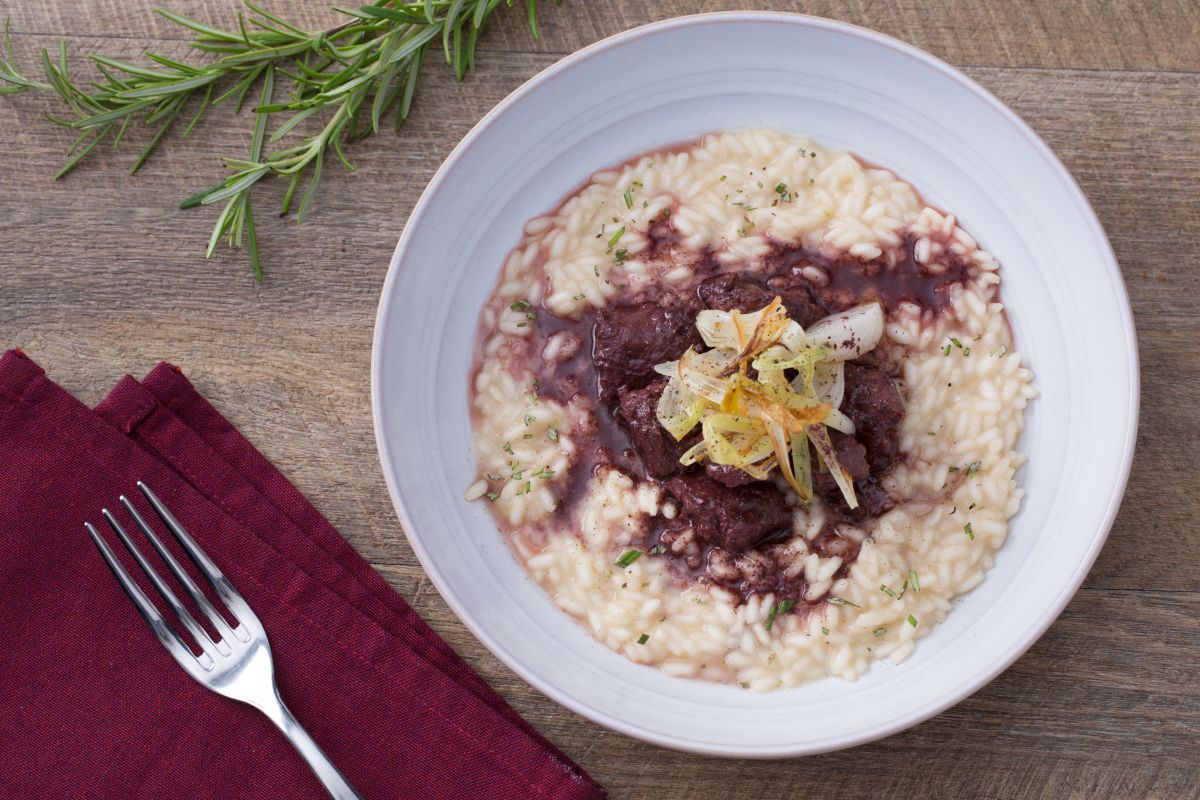Ossobuco alla Milanese with Yellow Risotto
- Average
- 4 h
- Kcal 57

Sausage and Nebbiolo risotto is a creamy first-course dish with a sublime flavor that brings together some of the finest ingredients from the Piedmont region. The star is Bra sausage, a product with protected designation of origin (DOP in Italian) that’s perfect for savoring either raw or cooked and for making lots of dishes, including this tasty first course. Discover alongside chef Davide Scabin all the secrets to making a perfect risotto that will be taken to the next level by this special meat, which is gently cooked in Nebbiolo wine and embellished with a spring onion that will give it a real flavor explosion when you try it. Sausage and Nebbiolo risotto is the ideal recipe for anyone looking to make a delicious dish that’s full of aromas to bring out the richness of Piedmontese produce.
Discover more delicious Risotto recipes and elevate your cooking game!

To make the sausage and Nebbiolo risotto, start by preparing the meat broth that will be used hot in the recipe. Next, prepare the spring onion by getting rid of the roots 1 and nearly all of the green part 2. Remove the outermost layer and slice the onion lengthwise 3.

In a frying pan, heat 1¾ tbsp (20 g) of oil, 1½ tbsp (20 g) of butter 4, and add the spring onion to brown it over low heat 5. Add a pinch of pepper and once the onion 6 is nice and golden, turn off the heat and put the onion aside, saving the juices in the pan.

Continue with the Bra sausage: Chop the sausage into pieces to remove the skin covering it more easily 7, then cut the meat into smaller pieces 8. Turn the heat back on under the pan you used to brown the onion and lightly fry the bay leaf and half a sprig of rosemary in it 9. In the meantime, chop the other half of the rosemary finely and set it aside; you’ll need it later to finish off the dish.

Now you can add the pieces of sausage to the pan 10 and let them brown well, although only on one side as the other should stay softer, so you won’t need to turn them while they’re cooking. Then deglaze with the Nebbiolo 11 and allow the cooking juices to reduce slowly 12. When the sausage juices have reduced, you can remove the pan from the heat and let it cool.

Next you can move on to the risotto: Peel the onion and chop it finely 13; add ½ tbsp of oil and 1½ tbsp (20 g) of butter to a thick-bottomed pan. Brown the onion 14, then add the rice 15 and let it toast for a few seconds too. You won’t need to toast the rice for long,

so pour in the white wine 16 almost immediately, then add a couple of ladlefuls of hot meat broth 17 and reduce the heat to cook the rice slowly. You should see bubbles that aren’t too well-developed 18.

Continue adding broth as needed 19 and to stir slowly to get the rice to cook. When there are 5 minutes of cooking time left, turn off the heat and make the risotto creamy by adding 3 tbsp (40 g) of butter and the Parmigiano Reggiano cheese 20. Stir, and then leave the rice to rest for the last 4 minutes 21,

then you can dish up the risotto 22: Place the rice in the dish and the sausage in the middle 23, then finish off with the spring onion, a dusting of pepper, and the rosemary chopped earlier 24. Now your sausage and Nebbiolo risotto is ready to be served.